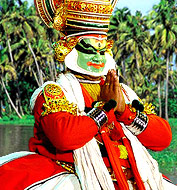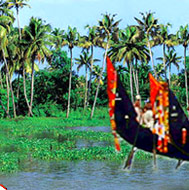Considered as the first European church built in India, St. Francis Church is situated at Fort Kochi, Ernakulam district, Kerala. Interestingly, Vasco da Gama, the first European to discover the sea route and enter India, was buried here at the St. Francis Church, but later his remains were transported back to Portugal, though one can still visit his tombstone which is still intact in the church complex. St. Francis Church was formerly dedicated to Santo Antonio, the patron Saint of Portugal. Situated 2 km west of Mattancherry in Fort Cochin, St. Francis Church is a living historical monument and one of the prime tourist spots of Fort Kochi.
St. Francis Church was originally built with wood. In 1506 AD, the Portuguese Viceroy, Dom Francisco Almeida was permitted by the King of Cochin to reconstruct the building in stone masonry. Consequently, the Franciscan friars refurbished the wooden church with bricks and mortar and thus, a tiled roof was erected. In 1516 AD, the new church was completed and dedicated to St. Antony.
When the Dutch captured Kochi in 1663, they converted it into their official church and carried out some renovations in 1779. This church was under the control of the Dutch until 1795, after which the British seized Kochi from the Dutch. They allowed the Dutch to retain the church for sometime, but in 1804, the Dutch willingly surrendered the church to the Anglican Communion, when it was passed to Ecclesiastical Department of the Government of India. It is believed that the Anglicans changed the name of the patron saint from St. Antony to St. Francis.
St. Francis Church was announced a protected monument in April 1923 under the Protected Monuments Act, 1904. The cenotaph, in memory of the residents of Cochin who fell in the First World War, was erected in 1920 and was unveiled by the Governor of Madras in October the same year. The boundary walls were erected in 1924. In 1947, the congregation joined the Protestant Church of South India (CSI).
Being a simple unpretentious structure, St. Francis Church has no particular architectural merit, but it stands as a landmark of history and church architecture of India. Interestingly, despite average architectural merit, numerous churches have been erected in India while keeping the St. Francis Church as the model. It has been raised on a plan similar to the earlier types prevalent in Kerala, though in elevation. The church walls are adorned with beautifully painted artworks, while the church graveyard has graves of Portuguese and Dutch nobles.
The St. Francis Church at Fort Kochi in Kerala
is the first European Church in India.
Holidays in Kerala : Kerala Pilgrimages : St. Francis Church












